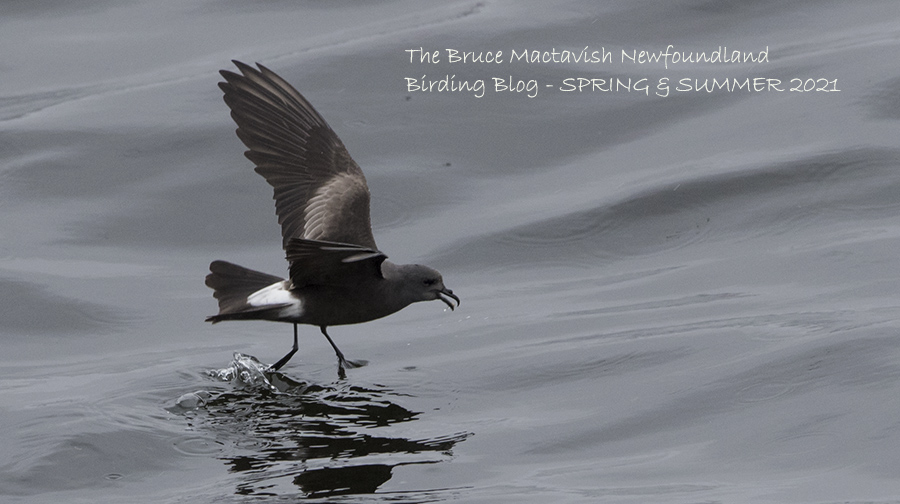Winter can be hard on ducks that try to overwinter in St. John's. The large numbers of Black Ducks, Mallards and Northern Pintails that are fed on bread and bird seed do OK. Sometimes rare ducks are attracted to the wintering flocks in St. John's. This past winter a Northern Shoveler present since fall decided to stay for the winter. In January a female Gadwall suddenly showed up at Quidi Vidi Lake. Neither of these ducks went for the bread and bird seed offerings. The Gadwall sometimes joined the wigeons and grazed on the grass when it was exposed. The shoveler hung out at various locations along the Virginia River. During a cold spell both the Gadwall and Shoveler ended up in the sheltered saltwater cove at Quidi Vidi Village. Two equally desperate ducks found each other. They fed on the algae growing on the slipway and around the wharves. Somehow they survived the winter. Through February and March the two were rarely seen apart. As spring approached the female plumaged Shoveler showed signs of moulting into a male plumage. They were an official 'pair' of ducks.
I saw the pair at QV Lake on 5 April. The shoveler is a long way from a good spring plumage presumably because it was malnourished during the winter and couldn't afford the extra energy required to grow frivolous pretty feathers. That should change now as more natural food comes on line. The question is will these birds mate and produce young? This hybrid combination does happen occasionally in the wild. Both of them being lost bird maybe they'll just stay around St. John's and nest.
This female Gadwall and male Northern Shoveler are an inseparable pair. Will they nest around St. John's? What will the young look like?


No comments:
Post a Comment
Note: only a member of this blog may post a comment.